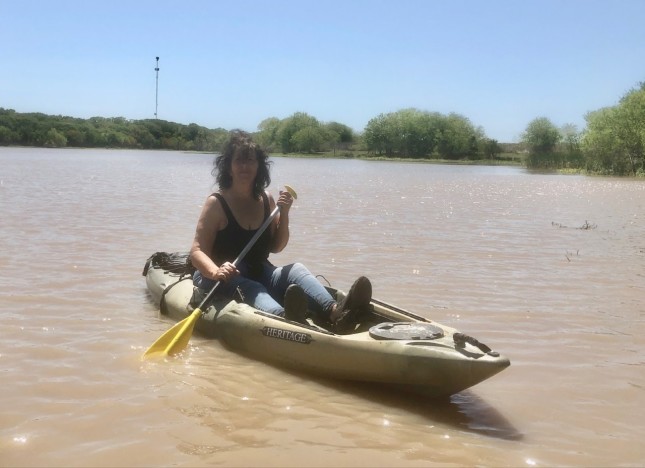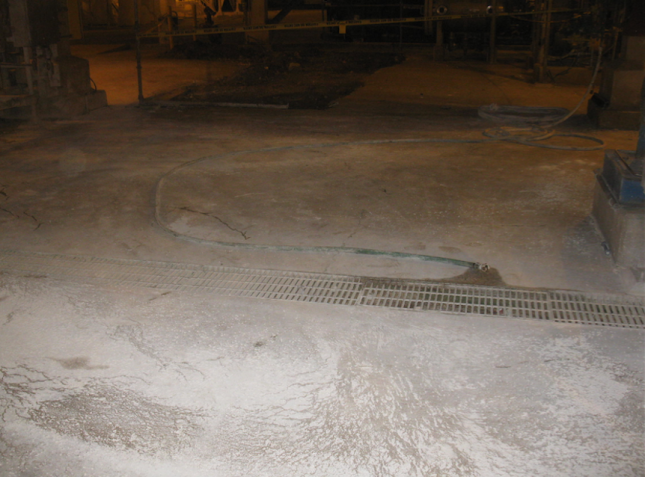-
Fighting the Flood of Nurdles: Texas Fisherwoman takes on Taiwan Plastic Company
September 29, 2022 By Ruoyi (Angela) PanOver decades, billions of small lentil-sized plastic pellets, called nurdles, flooded out of the wastewater pipes of Formosa Plastic’s plant in Calhoun Texas into the Gulf of Mexico. For decades, Diane Wilson, a fourth-generation fisherwoman in a rural fishing town called Seadrift, has been tracking and collecting data on the company’s nurdle pollution. In 2019, after three years of constant sampling, she and her scrappy volunteers won a dramatic legal victory with a consent decree mandating 50 million in penalties for past pollution and fines if they do not clean up previous pollution or maintain zero discharge of plastic.
Diane’s attention to nurdles is a rarity, for compared to consumer packaging plastics, nurdles have largely escaped public scrutiny. However, nurdles are too harmful and ubiquitous to be ignored as they are the second-largest source of microplastic pollution by weight. Every year, approximately 230,000 metric tons of plastic nurdles enter the ocean, the weight of 2,200 blue whales. They flow into the environment throughout the production and distribution process from factories, trains, and container ships. Nurdle spills happen around the world, from 18 km off the west coast of Sri Lanka and a 165 tons nurdle spill in Hong Kong, to a 750 million pellet spill that turned the Mississippi River into “a Nurdle Apocalypse.”
Nurdles and other microplastics are like magnets, attracting environmental pollutants and concentrating them on the surface. Nurdles thus pose a risk to ecosystems, biodiversity, food, and human health.
Up against a multibillion-dollar corporation in a small town, Diane Wilson collected documents, took thousands of photos of plastic pellets, and combed through pebbly sand and rivers for samples. Stepping up when regulators failed to act, her actions are inspiring more activists to confront the nurdle problems.
The China Environment Forum sat down with Diane Wilson, to learn about her three decades of battling Formosa Plastics to halt the nurdle pollution.
Where are you from and why did you start working on plastic pollution?
Diane Wilson (DW): I’m a fourth-generation commercial fisherwoman and water is very special and immediate to me. Plastic pollution discharged from the factories into the waterways that flow into the Gulf of Mexico is a big problem in my county. We have one of the largest plastic plants in the world — Formosa Plastics, which is the biggest employer in this small, rural county with more than 2,500 acres and 3,000 workers. Formosa has two downstream plants that produce Formosa’s pellets and powder and I tracked plastic pollution from its 13 stormwater outfalls and one major industrial outfall.
Plastic pollution is everywhere in this area, but no one seemed to consider it a problem. Formosa claimed that the plastic powder leaking from their plant was harmless, but I did research and found out that their PVC plastic powder contains the human carcinogen vinyl chloride. Moreover, the U.S. EPA is currently considering whether PVC waste should be labeled as hazardous.
How did you find out about the plastic nurdles?
DW: I learned about plastic nurdles through a worker at Formosa Plastic. He was so upset with the conditions in the wastewater unit where he worked that he became a whistleblower. He contacted the FBI, the EPA, Texas state park and wildlife agency, and Texas environmental agencies. All his information was ignored and any investigations were either superficial or short lived. After that, he talked to me about the nurdle problem.
After learning about plastic nurdles, what did you do?
DW: I have a kayak, so I went to every single Formosa Platic outfall and took pictures and samples as evidence. I gathered approximately 15,000 photos, some of which were used for the 2019 lawsuit.
Also, after San Antonio Bay Estuarine Waterkeepers and I obtained documents during the trial in the discovery phase, we exposed the fuller extent of the plastic pollution. For instance, we found out that 170,000 pounds of pellets (or called nurdles) flooded from outfall pipe six in one single release. There were 22,000 pellets per pound, which translated into 4.25 billion pieces of plastic nurdles dumped into the water in one release.
Our 2,500 samples were evidence that built up into a citizen lawsuit against Formosa for violating the Clean Water Act. Plastic as a floating solid is a violation of the plant’s wastewater permit, but the state and federal agencies had never acted or charged them with a violation, so we filed a citizen lawsuit.
What are the impacts of nurdles and plastic production?
DW: The main problem is health and safety. Plastic nurdles are noxious, containing chemicals harming animals, plants, and humans. In Point Comfort, plastics production is also associated with mercury exposure. The mercury concentration here is six times higher than what the EPA considers at risk. We have already tested the nurdles and learned that they can become a vector to move mercury and other contaminants from a closed area to open water on the bay. Plastic nurdles can threaten the health of people, especially children, who swim near the shore and who consume fish that have swallowed the plastic.
Second, plastic nurdles impact the commercial fishery. Fishermen found microplastics and nurdles in birds and turtles, shucked oysters, and fish guts. The mercury from nurdles also contaminates fish, increasing toxicity in the human food chain. Once microplastics enter the natural environment, they are too small to be systematically collected and cleaned up.
Third, nurdle leaks also affect landowners. Formosa ran their railroad right across ranch properties, where many nurdles leak from the trains. Landowners collected the nurdle pellets in their drainage ditches and had them analyzed. The results showed priority pollutants in the collected nurdles.
Now that you’ve won the suit against Formosa, what’s next?
DW: I will continue to monitor and report on Formosa Plastic violations. As part of the consent decree from the 2019 lawsuit, citizens have the right to monitor the plastic discharge by Formosa. Our engineering expert built a device known as the wastewater sampling mechanism that detected 299 violations within the first year after the ruling, leading Formosa to pay $6.7 million in penalties. We are using the fine to support community environmental projects and revive the fisheries by establishing a fishery co-op for fishermen whose livelihoods were destroyed by the nurdles.
Who’s your hero in this space?
DW: That would be Jace Tunnel from Nurdle Patrol, the director of the Mission-Aransas National Estuarine Research Reserve at the University of Texas. He started his research around Corpus Christi, collecting plastic pellets on the beaches. His work led to the creation of Nurdle Patrol in 2018, a nationwide community of citizen scientists collecting and monitoring nurdle and plastic pollution. The Nurdle Patrol group gathered 1,500 members to survey more than 1,000 sites spanning across the Gulf of Mexico.
Ruoyi (Angela) Pan was a spring and summer 2022 research intern at the China Environment Forum. Her research interests include U.S. and China plastic issues, international green finance, and the environmental implications of the Belt and Road Initiative. She completed a BA in Government and China & Asia Pacific Studies at Cornell University and has just started a JD at Cornell Law School.
Sources: the Texas Tribune; National Geographic; US district court for the Southern District of Texas Victoria Division; Watson & Wolfe; Eunomia; The Great Nurdle Hunt; Groundviews; American Chemical Society Publications; Reuters; Vox; Science Daily; Environmental Sciences Europe; Tel-Aviv University; Chemosphere; Marine Pollution Bulletin; The Post and Courier; National Cancer Institute; NOAA; EPA; Perales, Allmon & ICE; Department of Justice; Nurdle Patrol; Sea Grant
Lead Image Credit: Diane Wilson kayaking around Cox Creek near Formosa’s outfalls, used with permission and courtesy of Diane Wilson.
 A Publication of the Stimson Center.
A Publication of the Stimson Center.









